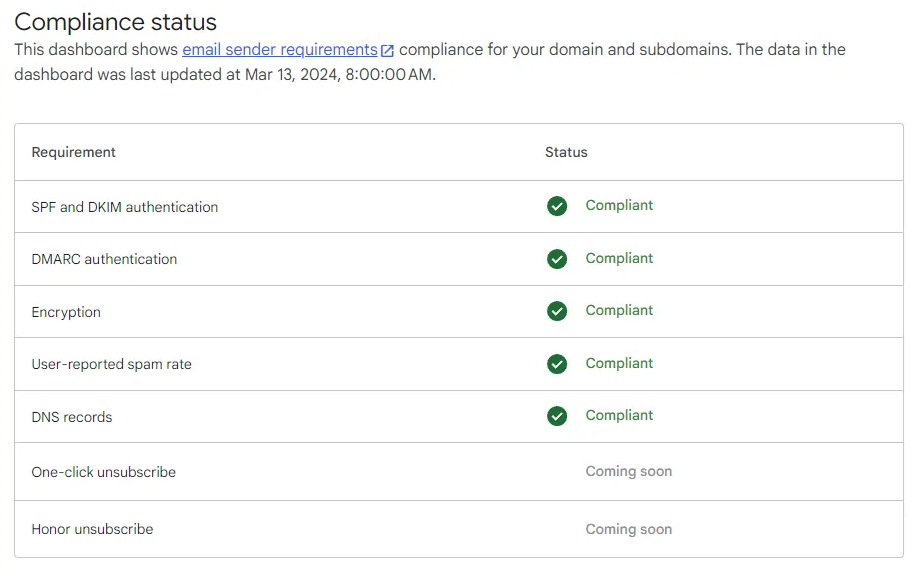Last October, Google and Yahoo announced new common rules for email senders. Also known as Yahoo 🙂
These new rules came into force on February 1, 2024.
As mentioned recently, Microsoft has also decided to impose the same requirements on email senders.
Dedicated dashboard to find out if a sender complies with the new rules
To find out whether senders are complying with the rules, Google has launched a new dedicated dashboard in their Google Postmaster Tools.
For several months, it was possible to check compliance with the rules:
SPF and DKIM authentication
From” header matching
DMARC authentication
TLS encryption
Rate of spam reported by users
Reverse DNS registration
All the new requirements are not yet available, but Google has just made available monitoring of compliance with List-Unsubscribe On-Click (only mailto was previously supported).
Here’s a reminder of the new rules.
Senders with more than 5,000 emails per day
- Email Authentication:
- SPF (Sender Policy Framework): Senders must configure SPF to specify authorized servers that can send emails on their behalf.
- DKIM (DomainKeys Identified Mail): Add a digital signature to emails to verify their authenticity.
- DMARC (Domain-based Message Authentication, Reporting & Conformance): Align SPF and DKIM policies and define how emails that fail authentication should be handled.
- One-Click Unsubscribe:
- Emails must include a visible and easily accessible unsubscribe link.
- Unsubscribe requests must be processed within two days.
- Spam Complaint Rate:
- Maintain a spam complaint rate below 0.3%
Senders Sending Less Than 5,000 Emails Per Day
- Email Authentication:
- Lower volume senders should also use SPF and DKIM to ensure email authenticity, though DMARC requirements might be less stringent.
- Unsubscribe Link:
- Including an unsubscribe link is recommended, though the two-day processing requirement might be less critical for smaller senders.
- Spam Complaint Rate:
- Even lower volume senders should maintain a low spam complaint rate to avoid blocks and maintain domain reputation.
 EN
EN FR
FR